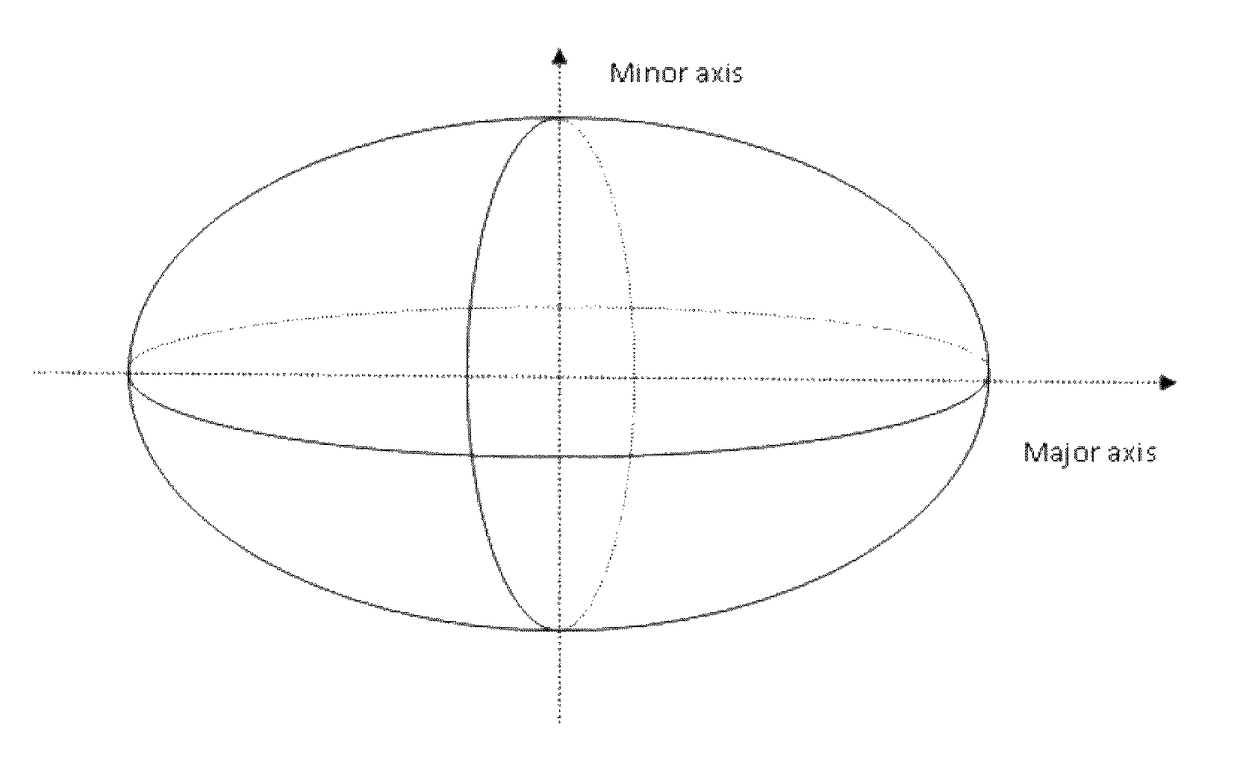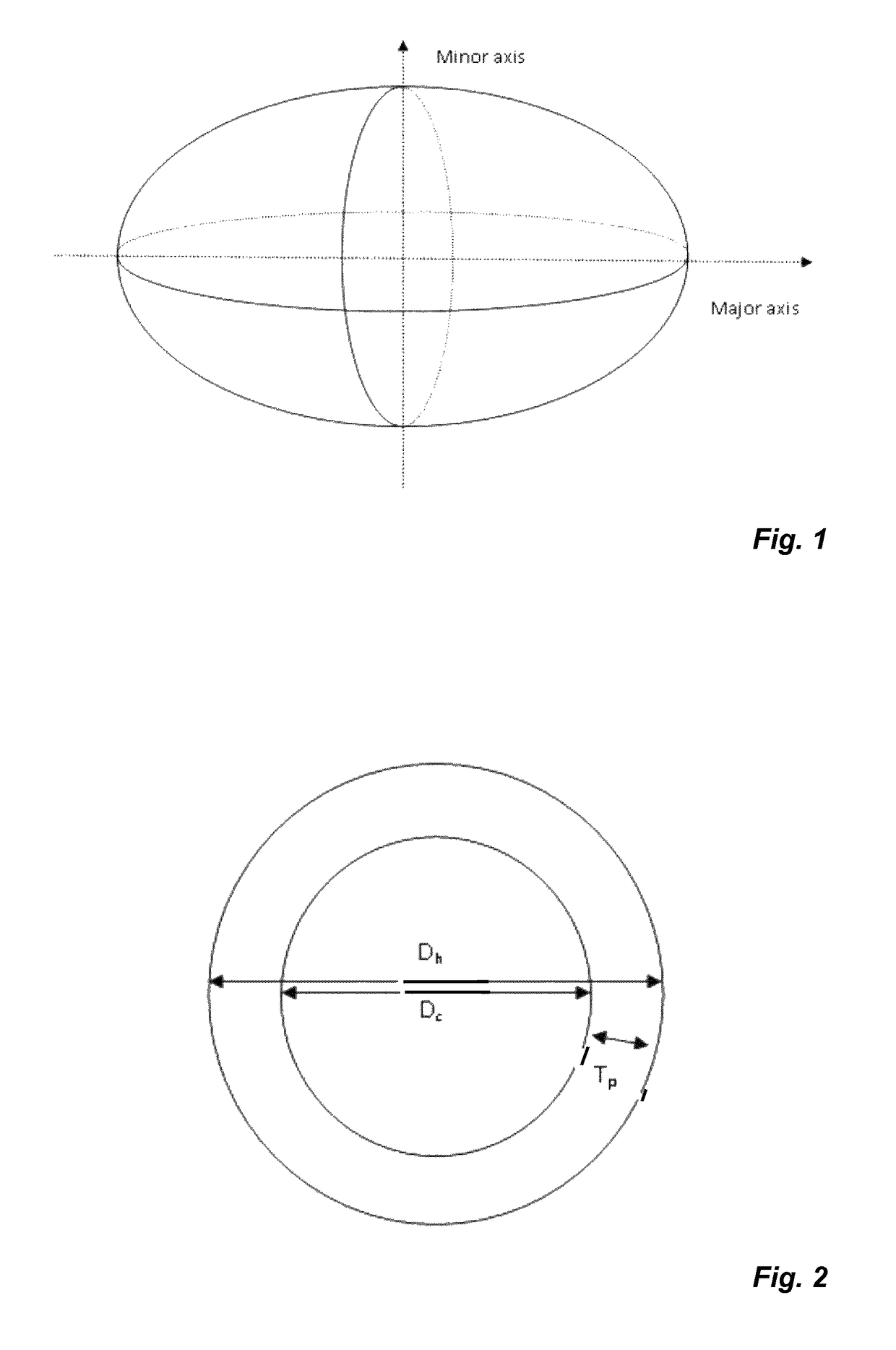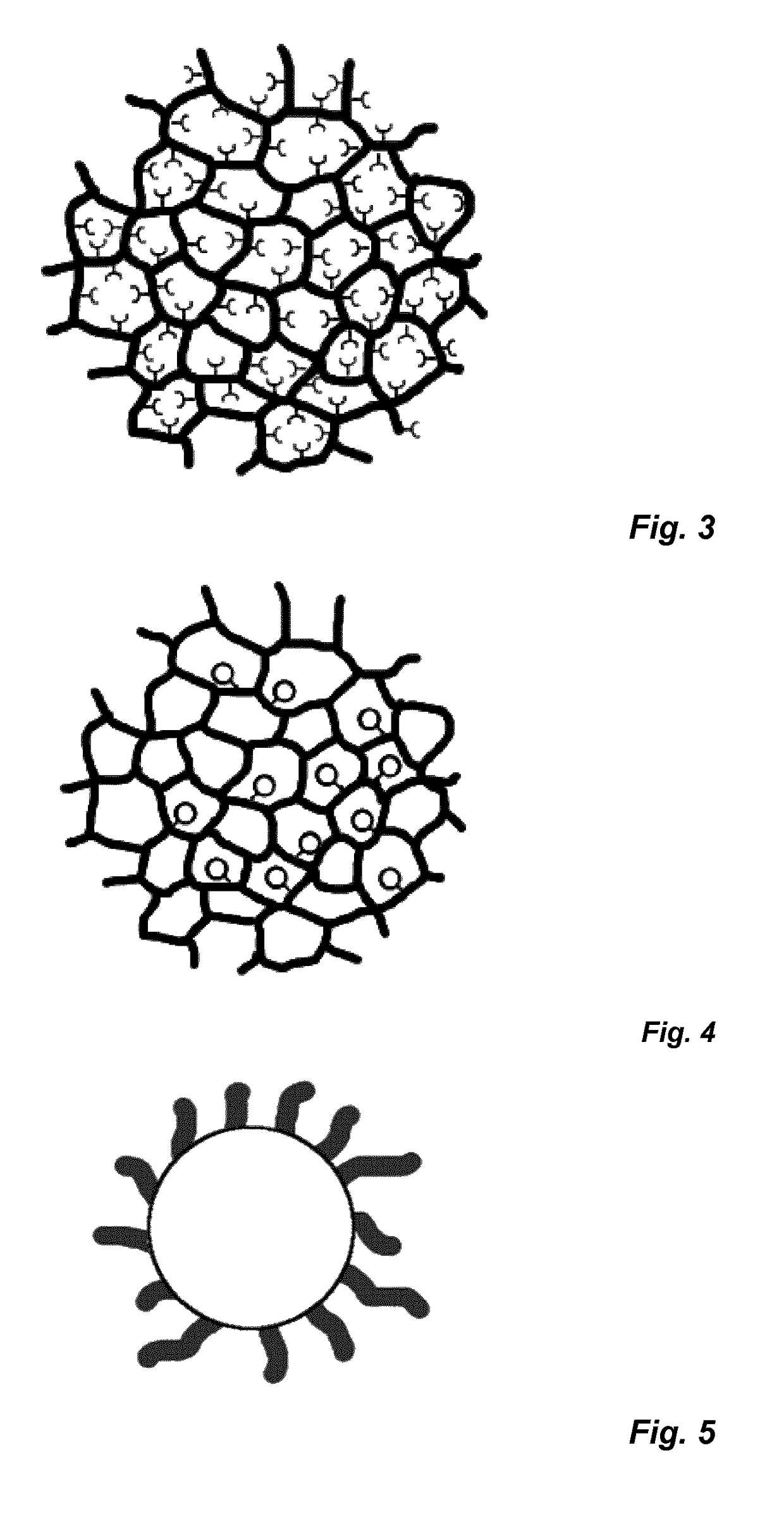Nanostructures and applications thereof
a nanostructure and nanotechnology, applied in the direction of radioactive preparation forms, drug compositions, pharmaceutical delivery mechanisms, etc., can solve the problems of high radiation doses, damage to surrounding healthy tissue, damage to normal tissue in the path of beams, etc., to reduce radiation dose, monitor the response, and increase the effective dose
- Summary
- Abstract
- Description
- Claims
- Application Information
AI Technical Summary
Benefits of technology
Problems solved by technology
Method used
Image
Examples
example 1a
Polymerization of 1,1-Bis(Triethoxysilylpropyl)-1,1-Bis(Dimethylphosphonato)Methane (Cpd 1) to Yield Central Parts Xa
[0340]Cpd 1 (640.8 mg, 1 mmol, synthesized as described in Example 1, EP2572736 A1) was dissolved in 20 ml aqueous 80% ethylene glycol in a three neck round bottom flask. The reaction mixture was degassed by applying vacuum to the reaction flask and thereafter filling with nitrogen gas. This procedure was repeated three times. Thereafter the reaction mixture was stirred for 24 h at 114° C. After allowing the clear solution to cool to room temperature it was filtered through a 0.45 μm sterile filter (Pall Corporation).
example 1a1
on Time: 14.16 Min
[0341]0.5 mg / ml albumin (from chicken egg white) solution resulted in a size: DLS=7.0 nm & GPC peak retention time=12.52 min.[0342]GPC retention time—Superose 12 10 / 300 GL, 100 mM NH4CO3, pH=7.4, flow 1 ml / min.
example 1b
erization of Cpd 1 to Yield Central Parts Xb
[0343]20 ml of central parts Xa were mixed with 32 ml MilliQ water in a three neck round bottom flask. The reaction mixture was degassed by applying vacuum to the reaction flask and thereafter filling with nitrogen gas. This procedure was repeated three times. Thereafter the reaction mixture was stirred for 24 h at 114° C. Cpd 1 (5.126 g, 8 mol) was dissolved in 128 ml ethylene glycol and injected into the reaction flask using a syringe pump to a final concentration of 100 mM phosphorus. The pump injection settings were 200 μl / min, selected syringe size 50 and the injection syringe used was 50 ml. A timer was connected to the pump, so that it only injected the solution 15 min per hour. The reaction mixture was stirred and heated for 49 h at a set temperature of 122° C. The actual temperature in the reaction flask was 100° C. (when 0 ml of cpd 1 solution was added), 103° C. (after 50 ml of cpd 1 solution was added), 106° C. (after 100 ml of...
PUM
| Property | Measurement | Unit |
|---|---|---|
| diameter | aaaaa | aaaaa |
| hydrodynamic diameter | aaaaa | aaaaa |
| molecular weight | aaaaa | aaaaa |
Abstract
Description
Claims
Application Information
 Login to View More
Login to View More - R&D
- Intellectual Property
- Life Sciences
- Materials
- Tech Scout
- Unparalleled Data Quality
- Higher Quality Content
- 60% Fewer Hallucinations
Browse by: Latest US Patents, China's latest patents, Technical Efficacy Thesaurus, Application Domain, Technology Topic, Popular Technical Reports.
© 2025 PatSnap. All rights reserved.Legal|Privacy policy|Modern Slavery Act Transparency Statement|Sitemap|About US| Contact US: help@patsnap.com



